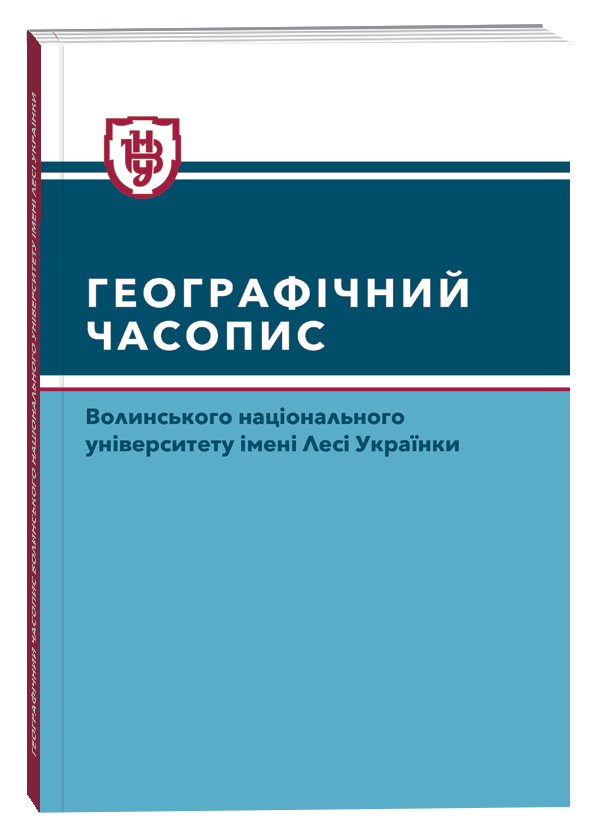SPITSBERGEN – A TOURIST DISCOVERY OF THE POLAR WORLD
DOI:
https://doi.org/10.32782/geochasvnu.2023.2.08Keywords:
Svalbard archipelago, Spitsbergen, Longyearbyen, tourism, tourist attractionsAbstract
Spitsbergen is the largest island of the Svalbard Archipelago (Norwegian province), where Longyearbyen (capital, with, among others, an airport and seaport) is located. There are several other small settlement units on the island. This creates the opportunity to get to know a slightly wider area of the island more conveniently. These settlements are among the northernmost inhabited human settlements. Comfortable and uncomplicated travel, at a reasonable price, has resulted in a rapid increase in the number of tourists in many previously inaccessible places. In addition, climate change, which can be felt today, as well as prolonged periods of heat and drought, initiate and intensify the risk of fires in many hitherto very popular tourist areas. The increase in the sense of danger among the society has clearly strengthened. In addition, the COVID-19 epidemic could direct the desire to travel in areas not crowded with mass tourist traffic. Spitsbergen, with its emerging tourist center in Longyearbyen, is an interesting offer that can meet the various expectations of tourists. The aim of the work is to show this area as an attractive tourist space and currently in a good tourist boom. The research was based on the analysis of literature, internet sources and field reconnaissance that took place in 2022. The results of the studies showed that Spitsbergen enjoys growing tourist interest, as evidenced by the expanding tourist infrastructure and the increase in the possibility of reaching Longyearbyen, as well as moving around area of this town.
References
Ćwiąkała J., 2012, Charakterystyka ruchu turystycznego na Spitsbergenie w latach 2000‒2004. [w:] Prace Studenckiego Koła Naukowego Geografów Uniwersytetu Pedagogicznego w Krakowie, I, 26–33.
Dolnicki P., Gawor Ł., 2012, Walory turystyczne wybranych regionów Spitsbergenu, [w:] Z. Zioło, T. Rachwał (red.), Annales Universitatis Paedagogicae Cracoviensis, Studia Geographica III. Innowacyjność usług turystycznych układów przestrzennych, Wydawnictwo Naukowe UP, Kraków, s. 70–74.
Hall C., M., Saarinen J., 2010, Polar tourism: definitions and dimensions. Scandinavian Journal of Hospitality and Tourism 10: 448–467.
Overnight stays in Longyearbyen. URL: https://www.mosj.no/en/influence/traffic/overnight-stayslongyearbyen.html (dostęp 10.04.2022).
Luksusowy mikrohotel na biegunie północnym. O cenę lepiej nie pytaj URL: https://portaltechnologiczny.pl/2019/09/22/luksusowy-mikrohotel-na-biegunie-polnocnym-o-cene-lepiej-nie-pytaj/ (dostęp 10.04.2022)
Euro. URL: https://pl.wikipedia.org/wiki/Euro (dostęp 6.05.2023 r.)
Ålesund. URL: https://pl.wikipedia.org/wiki/Ny-%C3%85lesund (dostęp 6.05.2023 r.)
Spitsbergen. URL: https://pl.wikipedia.org/wiki/Spitsbergen (dostęp 6.05.2023 r.)
Svalbard. URL: https://pl.wikipedia.org/wiki/Svalbard (dostęp 6.05.2023 r.)
Unia Europejska. URL: https://pl.wikipedia.org/wiki/Unia_Europejska (dostęp 6.05.2023 r.)
Jaskólski M., Pawłowski Ł., 2017, Turystyka kulturowa na Spitsbergenie – stan obecny i możliwości rozwoju, [w:] Turystyka Kulturowa, 2, 161–177.
Kajan K., 2014, Arctic Tourism and Sustainable Adaptation: Community Perspectives to Vulnerability and Climate Change. Scandinavian Journal of Hospitality and Tourism 14: 60–79.
Karczewski A., Stanowski W., 2013, Rzeźba terenu [w:] Z. Zwoliński, A. Kostrzewski, M. Pulina (red.), Dawne i współczesne geoekosystemy Spitsbergenu, Bogucki Wydawnictwo Naukowe, Poznań, s. 31–34.
Kostrzewski A., Rachlewicz G., Zwoliński Zb., 2022, Zmiany funkcjonowania geoekosystemów lądowych Arktyki [w:] Rachlewicz G., Arymera K., Weltrowska J., (pod red.), Krajobraz polarny w warunkach zmian klimatu. Spitsbergen Środkowy, II konferencja Polarna, UAM, Instytut Geografii i Geoinformacji, Poznań-Longyearbyen-Petuniabukta, czerwiec-lipiec 2022, 19–31.
Kugiejko M., 2021, Increase of tourist traffic on Spitsbergen: An environmental challenge or Chance for progress in the region?, Polish Polar Research, vol. 42 no. 2, pp. 139–159.
Kugiejko M., 2023, Tourism on Spitsbergen -challenge or chance for the Arctic region. DOI: 10.13140/RG.2.2.34046.66881
Machowski J., 1992, Polscy zdobywcy białego lądu, Wyd. Akademickie „Dialog”, Warszawa, 1–156.
Maciejowski W., 2007, Walory turystyczne i formy turystyki w archipelagu Svalbard (Norwegia) [w:] W. Kurek, R. Faracik (red.), Studia nad turystyką. Prace geograficzne i regionalne. Geograficzne, ekonomiczne i społeczne aspekty turystyki, IGiGP UJ, Kraków:, s. 123–134.
Rachlewicz G., Arymera K., Weltrowska J., (pod red.), 2022, Krajobraz polarny w warunkach zmian klimatu. Spitsbergen Środkowy, II konferencja Polarna, UAM, Instytut Geografii i Geoinformacji, Poznań-Longyearbyen -Petuniabukta, czerwiec-lipiec 2022, 1–78.
Saville S.,M., 2022, Valuing time: Tourism transitions in Svalbard. Polar Record 58. e11. DOI: https://doi.org/10.1017/S0032247422000055
Stewart E., J., Draper D., Johnson M., E., 2005, A Review of Tourism Research in the Polar Regions, ARCTIC 58: 331–458.
Viken A., Jorgensen F., 1997, Tourism on Svalbard. Polar Record 34: 123–128.
Viken A., 2011. Tourism, research, and governance on Svalbard: a symbiotic relationship. Polar Record 47: 335–347.
Zieliński A., 2010, Antarktyda – najmniej poznany kontynent na Ziemi, [w:] A. Predygier (red.) X Kielecki Festiwal Nauki, 15-30.09.2009. Wydawnictwo UJK, Kielce, s. 77–80.







